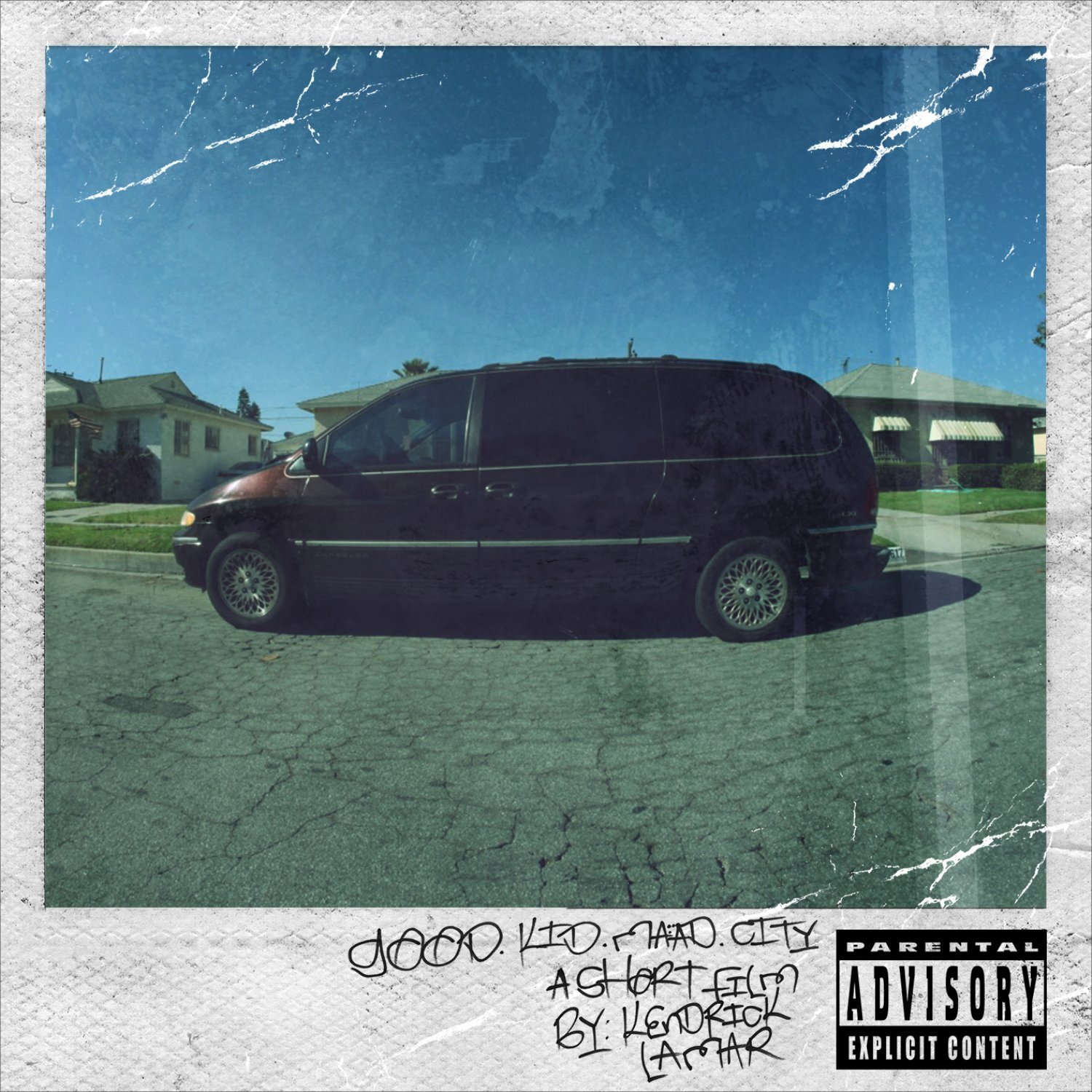The Visual Album: Kendrick Lamar's good kid, m.A.A.d. city
In 2012, Kendrick Lamar released the groundbreaking album, good kid, m.A.A.d city, which shattered expectations, spanned genres, and served as a defining moment in rap history. The album is cinematic, anchored by Lamar’s incredible storytelling, poignant verses, and use of skits to elucidate life in his native Compton. In fact, the album’s cover is subtitled “A Short Film by Kendrick Lamar.” Two years later, Lamar teamed up with director Kahlil Joseph to create visuals based on the album. Unfortunately, the incredible visual album was only screened at Sundance’s NEXT Festival in Los Angeles and at the L.A. Museum of Contemporary Art. Nevertheless, these stunning visuals capture the essence of the album while providing new depth to Lamar’s vision of his hometown.
“Brace yourself/I’ll take you on a trip down memory lane…”
The short film opens with the maddening and riotous track “m.A.A.d City”, establishing the tone for what we are about to witness. Set to shots of gang-affiliated men and cars, the film powerfully establishes its Compton setting. What follows is an undiluted, family-unfriendly ride through one of America’s most historically violent cities. The film shows a gritty portrayal of the city, represented by flashing images of riots, gunfire, and none other than Ronald Reagan. Three minutes into visual album, we are shown archive footage from Lamar’s childhood in 1992. Through the use of this footage, we realize that this short, fifteen-minute journey is not simply a recreation or dramatization. Rather, it is a visceral, authentic portrayal of Compton life.
“Lord God, I come to you a sinner/And I humbly repent for my sins…”
Unlike more plot-driven visual albums, such as Drake’s underwhelming Please Forgive Me or Kanye West’s mesmerizing Runaway; good kid, m.A.A.d. city paints a story without a cohesive narrative. In the span of seconds, Lamar and Joseph juxtapose the luxuries of modern life with the concepts of sin and sacrifice. During “I’m Dying of Thirst,” the archival footage from Lamar’s life is intercut with images of a spinning Cadillac emblem, as we hear the recitation of a prayer. In one shot, we see the innocence of a young Kendrick. In the blink of an eye, we are shown a symbol of material culture that equates to sin.
“We used to know we were stronger than the devil.” –Amiri Baraka
Soon after, the above quote from poet Amiri Bakara lingers on the screen, raising numerous questions regarding its intentions. Do we no longer know about our own strength? Or were we always mistaken- perhaps we never were stronger than the devil? In Compton’s hyper violent landscape, are these not one and the same?
“I pray my dick get big as the Eiffel Tower/So I can fuck the world for 72 hours…”
The film’s only true use of choreography is set to “Backstreet Freestyle”, in which Lamar boastfully expresses his hopes of living the fast, violent Compton lifestyle. The visual album, however, skewers the track, slowing it down tremendously as the initial frenzy devolves into slurred chaos. We see a young man, once passionately dancing, rather flailing his body, now struggle to control his movements. While this visual most directly alludes to the effects of alcohol, it also references the progression of the Compton lifestyle. The adrenaline rush of fast cars, ice, and guns is only evanescent; prematurely or not, death marks the end.
“I wonder if I'll ever discover a passion like you and recover/The life that I knew as a young'n in pajamas and dun-ta-duns”
In the visual album’s most beautiful moment, we are shown the literal faces of Compton- and no two are the same. Set to “Sing About Me”, one of my all-time favorite songs and arguably Kendrick’s most personally poignant track, this collection of shots showcases that while Kendrick paints his own picture of Compton life, each experience is unique. The song is interrupted by bullets, highlighting the lack of stability in the region, and resumes to a shot of children walking to school. Perhaps surprisingly, the film ends on an optimistic note, focusing on a street sign with “City of Compton” written on it. Compared to the darker, more surreal shots such as that of a man hanging upside down from a streetlight, the final shot of a house in the daylight calls forth a new day, a new beginning, a new story.
Kendrick Lamar’s good kid, M.A.A.d city could have been an obvious, even ‘easy’ choice to adapt into a short film. However, thanks to Lamar and Joseph’s bold direction, the film avoids devolving into a by-the-numbers recounting of the tales narrated throughout the album’s songs. Instead, they deliver an experimental journey through Compton: plotless, and simultaneously loud and quiet. In perhaps the most surprising and ingenious decision by the creators, we see little of Kendrick in the film; in fact, he is only seen as a child through the archive footage. Rather than emphasizing Kendrick himself, the film showcases Compton and his art, cementing good kid, m.A.A.d city as a groundbreaking visual work.
